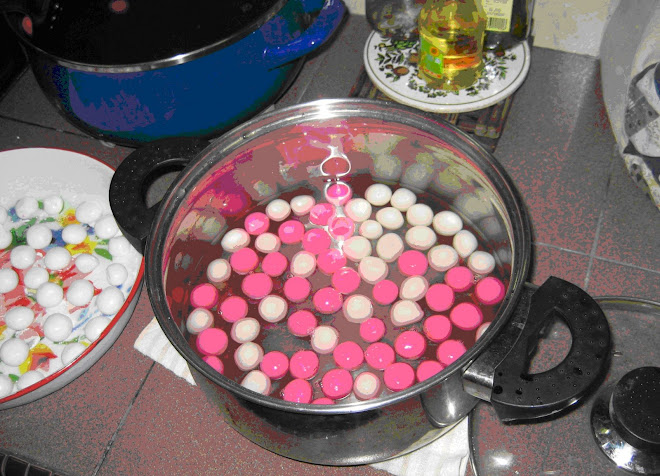
I recently stumbled upon a 1949 edition of Esquire’s Handbook for Hosts in an op shop. It was a rare find, I could hardly contain my excitement – I couldn’t believe my luck when the volunteer asked for $1 for the book. I did a little private jig inside, paid my $1 and set off my merry way. It’s been such an interesting read, dipping in and out of this book that I thought I’d share some bits and pieces from the book.
The chapter on kitchen equipment that a man-host needed made me take notice. We are talking late 1940s here – I was expecting the list to read something like this: wooden spoon, big frypan, saucepan, potato masher, carving knife, bread and butter knives and a wooden chopping block. Here are necessities Esquire recommended that a ‘man’s kitchenette should contain’:
A kettle, a set aluminium saucepans preferably with long handles, a frying pan, a roasting pan, a double boiler, at least one earthenware casserole, a wire sieve, a wire salad basket, an egg beater, mixing bowls, three kitchen knives, a small wooden chopping board, a vegetable brush, a wooden spoon and fork, a spatula, a long fork, a grater, a funnel, a pepper mill, a pair of scissors, an aluminium measure, a basting spoon, a coffeepot, a teapot and a wooden salad bowl…a pressure cooker is helpful for vegetables, onion-chopper to wire whisks, a good can opener, a good toaster, a waffle iron and a good coffee-maker that does it work at the table make a good kick-off.
Special equipment included: skewers for shish kabab, alcohol-flame chafing dish for almost anything dressy. Deep-fry kettle and basket, rolling pin, pastry board, baking pans, special molds for baba au rum or the like; small, shallow frying pans for crepes Suzette, an omelette pan.
I don’t even have half of these items in my own kitchen and I live in the twenty first century! What an eye-opening list of must-need items. Perhaps the sophisticated post-war man was a lot more capable than we first imagined. It certainly blows away my stereotypical image of the 1950s man coming home to his wife who waited hand and foot with slippers ready, pipe and tobacco primed, with dinner warming in the oven. Perhaps this was what bachelors had – not married men. Married men didn’t have to worry about their own meals, of course, their wives did all the chopping, dicing, baking and roasting. It was the single man who needed to deck out his little kitchenette for he was out to impress with his cooking skills and cocktail-making abilities to woo the single woman.
For table ware, it was even more interesting and actually, surprisingly quite strict – modern china and linens with simple and striking designs (preferably devoid of pink rosebuds) , with streamlined silverware were recommended. Esquire recommended tablecloth or runners in solid colours with contrasting borders, or resplendent with your monogram in big, bold letters. ‘Peasant designs’ apparently allowed for a lot of latitude. A man may have used gay Czechoslovakian linen cloths in raucous plaids or checks. ‘Your china may be Mexican pottery, Californian pottery in vivid sun-drenched colors or French Provencal or Italian pottery’. The modern 40s man may have even allowed himself such whimsies:- wooden-handled cutlery or salad forks with bright painted handles. I wonder if a single woman who had dinner cooked and laid out for her on dainty pink rose plates sitting on gaudy table runners who have thought her date a little fruity – would she have run away a mile?
As for your pantry shelves in your bachelor pad – these were Esquire’s emergency stock: butter, flour, sugar, salt, pepper, onions, oil, vinegar, baking powder, gelatin, Parmesan cheese, coffee and tea, cocoa, mustard, ketchup, Worcestershire sauce, anchovy sauce, Hungarian paprika, curry powder, capers, bay leaf, garlic cloves, vanilla, caraway seeds, raisins, rice, macaroni, black peppercorn, nutmeg, prunes, brown sugar and arrowroot.
These I thought were pretty solid ingredients to have in any pantry – the prunes and arrowroot perhaps a little old-fashioned but nevertheless, caraway seeds, garlic cloves, Hungarian paprika and capers are all very exotic and impressive. I would have been impressed if a man opened his cupboard and had all those ingredients on his shelf!
And if he serves you tongue tidbits* as a starter on plain white china – you know you’re in for a real saucy night!
* Tongue tidbits, by the way if you’re interested in making for a truly authentic 1940s canapé goes something like this (a la Esquire):
Spread English mustard, red pepper and olive oil on sliced tongue. Then pack the slices together and put the whole business in the icebox until the mixture soaks into the meat. When ready to serve, pull the slices of tongue apart and fry in butter. Serve hot, with thin slices of bread.
(Recipe can be found on p. 23)



